Myths – they are all around us, but they are especially prevalent in weight loss and workouts. If you’ve ever heard that doing more crunches will help you lose belly fat or that when you stop working out muscle turns to fat – you’ve been the victim of the myth people. Today, we’re looking at 33 of the most popular weight-loss and workout myths out there and we’ve even included the science to prove these myths are, in fact, untrue.
Myth #1: The number on the scale is all that matters.
False.
While the number on the scale is important to many people, it doesn’t provide enough information about your health to determine whether you’re healthy. For example, you may believe that losing a lot of weight quickly is a good thing because that number is lower. That isn’t always the case. While you may be able to lose a lot of weight, that doesn’t mean your cardiovascular health is good or that your metabolism is working optimally.
When a person loses a lot of weight quickly, they are more likely to regain that weight back. In a study published by the Medical Clinics of North America, a review was conducted to determine what impacts long-term weight loss and long-term management of obesity. For those who are obese, rapid early weight loss often leads to a plateau and then a progressive regaining of that weight.
There are many ways to lose weight, but becoming healthy and enjoying long-term wellbeing is more than just dropping numbers on the scale. For many people, there is much more to the process than this, which is why Noom users work with a coach and learn the psychology of weight loss to maximize results.
Myth #2: Not everyone should lift weights because it will make them bulky.
False.
One of the myths about exercise is that strength training, such as lifting weights, shouldn’t be done because it can create a bulky, muscle-enhanced appearance. Weightlifting in men is a common way of exercising to build muscle mass. Women don’t build muscle in the same way as men do, though. Men have a higher level of testosterone in their bodies, which fuels the muscle-building process. While women can gain more strength and muscle tone from weightlifting, they are not going to naturally get the same results without actively working toward that goal.
There are vital benefits to women who use strength training in their workouts. A study published by the Journal of Extension points this out. Strength training improves physical activity behaviors in women, and it helps to improve body image. This is especially true in women in midlife and older. It can help to enhance the quality of life as it relates to health.
Women who engaged in lifting weights during the study period were most likely to engage in ongoing physical activity, including strength training and stretching. This led to an increased level of enjoyment in such activities as well as improvements in overall health.
Rx weight loss, the right way, with Noom
Get access to prescription weight loss medication with Noom.Myth #3: Doing a lot of crunches will get you a flat stomach.
False.
For some people, it makes total sense to do a massive number of crunches if the goal is to tighten the abdominal wall and create a flat stomach. This is an ongoing myth in which people believe that if they do enough crunches or sit-ups, that abdominal fat will simply disappear into thin air. This isn’t the case. In reality, abdominal muscles are so small they have little impact on fat loss and if there’s a layer of fat between the muscles and skin, you won’t see that six pack until the fat layer thins.
In a study published by the Journal of Strength and Conditioning Research, a group of 14 men and 10 women between the ages of 18 and 40 were monitored. They were assigned to one of two groups. One group was to do abdominal exercises – seven specific exercises for two sets of 10 reps each time. This was done over six weeks, five days a week. The other group was a control group. They didn’t have any intervention throughout the process.
During the study, researchers measured the participant’s body weight, body fat percentage, and abdominal circumference, along with other factors to determine if a person doing abdominal crunches would see a significant change in abdominal area fat. The study found that abdominal exercise training didn’t create a substantial change in the amount of fat. It did improve the muscular endurance of the area, compared to the control group, but it didn’t change the body composition – so no flatter stomach.
Myth #4: To exercise, you have to join a gym.
False, mostly.
Joining a gym is often seen as the most important step in getting fit or losing weight. Obtaining a membership may seem like an essential step, but that’s rarely enough to make the results possible. In short, while joining a gym is a good way to exercise, most people still need to be motivated to get to the gym and perform with a trainer to get the desired results.
A study conducted by Iowa State University found that people who were a part of a health club were able to exercise more. They also were more likely to have aerobic activity and strength training in their lives. If a person maintained that gym membership for over a year, the benefits in these areas grew even more so.
What was important, though, is that these individuals went into the gym frequently. While having a gym membership may encourage people to exercise, they still need to motivate themselves to get into the gym. If that same motivation was put towards exercising in ways outside of the gym – such as running, swimming, or strength training at home, the same results would likely be seen. For some people, making a payment to a gym creates more obligation to go. In these cases, it may motivate them to exercise more frequently.

Myth #5: Extreme calorie cutting is a good way to lose weight.
False.
Cutting out an extreme number of calories from a diet can seem like a good way to lose weight and it may lead to some super fast weight loss, initially. In some situations, calorie restriction and fasting benefit those who consume a significant number of calories each day – often an excessive amount. However, there is evidence that substantial and extreme calorie reduction can be problematic for long-term health and further weight loss.
One study by the American Journal of Clinical Nutrition found that an extreme reduction in calorie intake slowed the body’s metabolic rate. The study found that, when food access becomes significantly lower than average, the body moves towards a reduction in energy output to conserve energy reserves. Severe food deprivation causes the body to stop burning energy reserves to access that energy later. For those who are overweight or obese, this may mean that the body slows down the metabolism so much so that further weight loss – after a significant initial drop – may be much slower or harder to reach.
For most people, extreme calorie cutting will create a sudden loss of weight. Initially, this is likely to be water weight. However, it doesn’t produce long-term results in weight loss, and, when calorie intake resumes normal levels, you’ll likely regain the weight. This means little long-term weight loss and maintenance are likely to occur.
Noom NEVER suggests extreme calorie-cutting, because the body needs calories to function properly and maintain overall health.
Myth #6: You need electrolytes after every workout.
False.
It is a common myth that people think electrolytes are critical for hydration. Electrolytes are essential for many functions within the body. These are essential minerals, such as potassium, sodium, and calcium, your cells need to function correctly. Magnesium and phosphate are two additional types. Most of the time, people get the electrolytes they need through the food they eat. However, there are times when the body will see a drop in electrolytes and needs them replenished quickly to avoid problems.
Most of the time, when the amount of water in your body changes significantly, that can cause a drop in electrolytes. Sweating is a good example of this. Hydration is a balancing act. After a workout or any event when you’re sweating a great deal, the first and most important step is to hydrate fully. That means replacing the amount of water lost with at least the same amount.
Electrolytes can be a good thing, but they are not necessary after every workout. They are more likely necessary when you’re severely dehydrated, such as being out in the sun all day.
Focus on hydration after a workout. That includes consuming enough fluid to replace what was lost. That’s the most important first step. This is proper sports hydration, as noted by research in the journal Nutrients.
Myth #7: You can run off the pounds.
False, mostly.
Any type of physical activity can help achieve a calorie deficit. The goal of many types of exercise is to increase heart rate, which pushes the body to burn fuel (such as stored fat) for energy.
Running is one example of this type of exercise. However, running alone isn’t enough to help you lose a significant amount of weight. First off, there’s the fact that exercise tends to take longer to create the calorie deficit needed for significant weight loss. Then, there’s the fact that many people overcompensate after a workout and eat too many calories, thus rendering the activity nearly useless, in terms of creating a negative calorie balance.
Running doesn’t burn as many calories as other types of exercise, especially compared to the amount of time put into the process. More so, the body learns to adapt to running over time. That means that any initial results that a person has will be lessened as the body becomes more conditioned. That further limits the amount of weight loss it will create.
As noted by the Journal of the American College of Cardiology, running has many benefits – reducing the risk of heart disease, boosting mood, and improving sleep quality. Running can improve heart health, even if a person isn’t losing a significant amount of weight. While it may not burn as many calories as other forms of exercise, it can contribute to overall health and wellbeing.
Myth #8: You can eat whatever you want as long as you exercise.
False.
Another way to word this common myth is that you can’t outrun a bad diet. Some people believe that they can eat anything they want to as long as they exercise. Some believe that eating “junk” food or food that’s high in sugar is okay as long as they get into the gym and workout for the day. This is one of the exercise myths debunked by science.
There are those who believe exercise is a miracle cure, that as long as a person is exercising, what they consume plays less of a role in their overall health and weight. A study conducted by the Academy of Medical Royal Colleges focused on this belief that a person could exercise for 30 minutes a day using moderate intensity and do this five times a week to gain the benefits of chronic disease prevention and management.
If a person maintains a high-fat, high-sugar diet, even if they are exercising routinely, it’s unlikely that they will be able to put off the onset of conditions like heart disease and diabetes – both of which are directly impacted by diet. While exercise can help to burn off some of that fat and glucose, it isn’t enough to prevent the onset of disease in those who consistently consume a poor diet that lacks nutrients or healthy carbohydrates. In short, no matter how much a person exercises, this doesn’t promote the ability to eat more calories than the body needs.
With Noom you CAN eat whatever you want, but you are taught how to choose proper portion sizes so you can lose weight and eat the foods you love too!
Myth #9: You should do “fat-burning zone” exercises to lose weight.
False.
The fat-burning zone is a term used to describe a place at around 55 to 70 percent of your maximum heart rate. During this period, the body burns more fat than it does carbs for fuel.
However, that doesn’t mean this is the best way for you to exercise to lose weight.
If your goal is to reduce weight by burning fat, it’s better to exercise in a way that burns a higher number of calories. This is more efficient for the body than working out when your heart rate and intensity are at a lower level, which occurs in fat-burning zone exercises. In these exercises, your body may burn more fat, but they don’t necessarily burn the most calories, and those calories contribute to weight loss.
The lower the intensity of any workouts, the fewer calories you’ll burn. Some fat burning might be at an elevated level, but the calories burned are fewer. Instead, focus on improving the intensity of a workout. This will mean you’ll still burn just as much fat, but you’ll burn more calories and do so in less time.
Myth #10. Stretching prevents injuries.
False.
One of the most commonly believed principles is that if a person wants to limit their exercise injury risk, they need to stretch. Stretching, in this capacity, is supposed to help decrease the pull on tendons and ligaments, helping to loosen them up so that they are less likely to be strained during any type of exercise. Yet, this may not be as accurate as many people think.
There are a few things that are wrong with this. First, there’s no evidence that stretching actually prevents any type of injury from happening. There is evidence that stretching may prevent you from reaching your maximum strength during exercise or a workout. When you stretch, you may be putting yourself at a higher risk of injury and limiting the outcome you have from exercise. This was reported by theNicholas Institute of Sports Medicine and Athletic Trauma.
This study found that there is limited evidence to support the improvement of risk related to stretching and shares the importance of more research in this area. It is crucial to consider the benefits and limitations of stretching before counting on it as a type of injury prevention method.
Myth #11. Fat can turn into muscle and muscle can turn into fat.
False.
This myth comes down to basic science. Muscle tissue and stored fat are two very different types of components. The myth of turning fat into muscle is commonly associated with the belief that a person who wants to build muscle can replace fatty tissue with lean mass. Muscle tissue is active tissue. That means the tissue is continuously burning calories even when a person is sleeping. It is working as an engine on an ongoing basis.
Fat tissue isn’t the same. Instead of a working engine, fat is like a storage tank of energy used when there is a need. It doesn’t burn calories at any time. The sole goal of fat is to store energy for times when there isn’t enough provided in the diet.
As noted in a study produced by Brigham Young University, muscle growth happens in the fibers of the muscle. Myofibrils are split, and as they heal, new muscle tissue grows over the area, expanding the size of the muscle. Nutrition plays a role in this process. It becomes necessary for the body to have ample amounts of protein to ensure cells can repair muscle tissue. When exercising, a person will burn stored fat to lose weight. To grow muscle, they need to push existing muscles to new limits, causing a split in the fibers that leads to further growth.
Myth #12: The number of calories your cardio machine says you burned is accurate.
False.
Many people want to track the number of calories they are burning during a workout. They believe this can help them create a calorie deficiency, which occurs when you’re taking in fewer calories than your body is burning. This means the body has to use stored reserves as energy to fuel a workout. While this is a good idea – burn more calories than you consume – tracking them is a bit more challenging to do than you may realize.
According to a study published by Exercise Medicine, exercise equipment isn’t reliable when it comes to tracking the number of calories you’re burning. The study followed 34 people as they were working out to determine how many calories were burned on various types of exercise equipment. They found that elliptical machines tend to overestimate the number of calories burned during a workout. According to this study, individuals should expect these machines to exceed calorie burn by as much as 100 calories for every 30 minutes of exercise performed—the study based this estimation on moderate-intensity workouts.

While you can utilize exercise equipment to track calories, recognize they are not always accurate. A key indication from this study is that lower resistances tend to overestimate calorie burn far more so than higher resistances.
Myth #13: Workouts should be at least an hour.
False.
One of the most daunting aspects of working out is having the time to dedicate each day. It’s common to believe that for a successful workout, it needs to last at least an hour. That’s generally not the case.
In a study by the University of Copenhagen, researchers found that exercising just 30 minutes each day provides the same effective weight loss and body mass improvements as exercising for a full hour. The study, published by the American Journal of Physiology, followed a group of Danish men for 13 weeks. Half of the men worked out for a full hour each day while the other half worked out for just 30 minutes. All wore heart-rate monitors and devices to calculate calorie burn.
The results found that men who exercised for 30 minutes lost 3.6 kg in three months. Those who exercise for 60 minutes, on average lost 2.7 kg. The extra time spent working out didn’t enhance weight loss any further for this group. The men, all of whom were healthy but moderately overweight, reported the same level of improvement.
The study also tracked how many calories the men burned. It found that those working out for 30 minutes burned more calories than they should have relative to the actual training program. This study shows that working longer and harder doesn’t offer as many benefits as 30 minutes of quality exercise.
You can start with as little as 10 minutes of exercise a day, three days a week as a beginner and still see results. The idea is to work toward longer, more intense workouts in a safe manner.
Check out Noom where 50% of the total calories you burn each day get added back into your calorie goal.
Myth #14: You should do your cardio first.
False.
Hitting the treadmill first isn’t ideal for most people. While there is a lot of debate about whether people should start with strength training or cardio, most experts believe it isn’t ideal to do cardio first. When a person engages in aerobic exercise, the body is working to burn through energy and reserves to meet the goals of intensive cardiovascular demand. Most of the time, a person will burn a significant amount of energy in this way. That means the body is using its reserves of nutrients during the workout.
When this happens, and then a person tries to lift weights, they will likely have less energy to put towards lifting. This may limit how many reps they can do or the amount of weight they can lift during the process. More so, it also causes fatigue in the muscles from running or other exercises. That means the muscles have less ability to work at their optimal level to achieve their very best outcome.
Some experts recommend interval training in which a person will go from one exercise to the next in short bursts instead of focusing on just one area. A study published by the American College of Sports Medicine found that some people see less fatigue from muscle use and more reserved energy when they use interval training over other methods.
Myth #15: Lifting doesn’t help you with weight loss.
False.
Some people believe that to lose weight they must burn calories through aerobic exercise. This type of cardio exercise is important for weight loss, but weight training through lifting can also be beneficial. Lifting does help with weight loss. Rest assured, it’s a common belief that building muscle won’t contribute to weight-loss efforts, yet, the truth is precisely the opposite.
The action of weight lifting will burn some energy for individuals. However, the benefit of lifting can come hours later. A study reported by Sacred Heart University found that hours after working out through weight lifting, the body is still burning more calories. After weight training, a person’s resting metabolism stays elevated for up to 38 hours. When compared to cardio workouts, this is an excellent advantage. Cardio workouts don’t offer this benefit. As soon as the cardio workout ends, the calorie burn stops.
More so, the development of muscle mass is important for weight loss. Because muscles continue to burn energy all of the time – and stored fat doesn’t – they are contributing to weight loss on an ongoing basis. Many people will find that this type of exercise is important because it helps them create leaner muscles that can burn through calories faster, encouraging longer-term weight loss. A single workout with lifting can contribute to weight loss for over a day. This doesn’t happen with cardio exercises.
Myth #16: Bigger muscles translate into greater strength.
False.
Having larger muscles doesn’t always mean those muscles are stronger than others. It is possible to cause muscle fibers and mass to grow without increasing the amount of strength they possess. The difference here comes from how the muscles grow. If a muscle is stressed enough and repairs itself, it will add tissue to the muscle group. This makes the appearance of the muscle much larger. However, this doesn’t directly translate into increased strength.
Muscle growth, which is called hypertrophy, simply implies the volume of the myofibrils – or long proteins that create muscle cells – are more numerous.
Without the use of repetitions of weight, a muscle may not grow in strength. For muscles to get stronger, they must be pushed to a higher level through increased weight and reps, as noted in a study published in the Journal of Bone and Mineral Research.
To gain strength, a person needs to train for strength. This means they need to increase the amount of force produced by a muscle during a workout session. To build muscle strength, the amount of weight needs to increase over time. How long that weight is maintained can also be a critical factor. This process allows for muscles to fill with blood and fibers to press together in tight formation. This helps to build the actual strength and ability of the muscle to perform.
Myth #17: Spot-training can help you lose fat in a specific area of your body.
False.
Spot-training is the practice of trying to achieve specific improvements in particular areas of the body. This myth is often believed by those who want to have large arms or who want to just do sit-ups as a way to tone their abdomen. The problem is that the body doesn’t lose weight in this manner. During a workout, the body will burn through stored energy reserves to meet the demand, yet it is impossible to know where the body is pulling that energy from. It could be from any area of the body where fat or energy is stored.

In one study conducted by the Department of Kinesiology at the University of Connecticut, researchers looked at 104 people who participated for 12 weeks. During that time, they spot-trained using resistance training to address specific parts of their body. Skinfold calipers were looked at to determine the amount of fat loss in any particular area. The study found that spot training like this is ineffective for most people. For some men, there was an indication of improvement, but there was no improvement for women.
Spot training can help to improve muscle mass. When a specific muscle group is used, it can help to develop lean muscle in that area. However, that lean muscle mass doesn’t always replace the fat stored in one area or the next.
Myth #18: The more you sweat, the more fat you’ll burn.
False.
Sweating doesn’t directly help a person to lose weight, but it may play a role in the bigger scheme. Sweating is the body’s process of helping to reduce a person’s core temperature. The body is working to cool itself. In some cases, it may be doing this because a revved up metabolism causes an increase in the internal core temperature. If a person’s metabolism is elevated and working at its highest level, that may mean burning through stored fat reserves. That isn’t the only reason this occurs, though.
Most of the time, during exercise, the body is burning through carbs. It isn’t necessarily burning through stored fat. When the body is burning calories like this, it can increase the rate at which you sweat. That’s because the internal core temperature of the body increases. Yet, this doesn’t mean your body is actively burning stored fat at this time.
As noted in a study from the Gatorade Sports Science Institution, the rate at which a person sweats is related to the type of activity they are engaged in and the level of physical fitness a person has. Sweating itself doesn’t indicate weight loss but an internal increase in body temp, which can happen even at low levels of calorie burn.
Myth #19: If you take a break from working out, your muscles will turn to fat.
False.
It is somewhat a common myth that when a person stops working out, their muscles turn to fat. When a person achieves weight loss and builds muscle mass, it is important to maintain this with regular exercise and fitness. Not doing so can impact the conditioning of the body.
When a person stops exercising, especially when it comes to lifting, the muscles begin to contract and get smaller. Muscle tissue itself doesn’t turn into fat tissue, though. When a person exercises using weight training, the muscles go through hypertrophy. This indicates the muscle tissues are getting larger. When that exercise and resistance is taken away, the muscles go through the atrophy process. That means they get smaller.
There is no way for muscles to convert into body fat. If a person stops exercising, however, this can lead to other body changes that result in fat gain. Muscle strength and stamina both fall within a short period when exercising slows down or stops. The body also leans toward storing more fat for fuel. The body can gain weight from increases in stored fat.
Muscles are made up of pure amino acids, water, and protein. There is no fatty tissue within the composition of muscles. It doesn’t matter what changes happen in the body. There is no way for muscle tissue to become fat, but fat layers can be added to the body over time due to a lack of exercise, as noted in a study published by the National Institutes of Health.
You know what does turn to fat? Excess energy, like the kind you get when you eat large servings of calorie-dense foods. With Noom, you learn how to choose foods with a lower calorie density so that you can eat more for fewer calories and lose more weight.
Myth #20: Carbs are evil.
False.
Carbohydrates are a significant source of nutrition for the body. Most people consume up to 40 to 55 percent of total energy intake from carbohydrates each day. Within the body, carbs act as a type of fuel source. They help to support renal production, brain health, and the function of cells and tissues at a very minute level. Some people feel that carbs are a bad thing and, as a result, they shouldn’t eat any of them.
The onset of carb-free diets has led to this myth. It is important to know that any type of food that’s overconsumed can lead to fat gain, including carbs. Eating carbs leads to an increase in blood glucose levels, which encourages the body to release insulin so the cells can begin to burn through the energy. Eating the wrong types of carbs, such as white bread, snack foods, and refined carbs can lead to a significant weight gain. These cause a fast and hard spike on glucose levels in the bloodstream, leading to a considerable amount of energy that the cells cannot use. Healthy, complex carbohydrates, though, drive up the glucose levels in the blood at a significantly reduced level and more slowly. This means the body needs to produce less insulin. It also means that a person will feel fuller longer.
It is a common misconception that carbs are a bad thing entirely, but the right amount and type can help to keep a person from overeating. It may also help to minimize the risk of not having enough fuel for a workout.
Myth #21: Exercising will suppress immune system function.
False.
It’s common to hear a lot about exercise in general, being a good thing for health. Living a healthy lifestyle often includes regular exercise. However, some people believe that exercising will suppress the immune system’s function temporarily.
The truth is that regular exercise is very beneficial to your health and wellbeing. It has been supported by years and dozens of studies that regular exercise is good for your long-term health. Daily physical activity is considered beneficial, but if you see no benefits from it, there is no negative to getting this amount of exercise. A study, published in the journal Frontiers in Immunology, finds that it is beneficial to your immunological health to participate in ongoing activity.
The study found there is no real evidence to support the claim that exercise suppresses the immune system’s response. Instead, it provides evidence indicating that routine exercise may be able to limit or delay the immunological aging in the body. In short, that means consistent exercise may help keep the immune system functioning at its best level for a longer period. There is no evidence that an active lifestyle will limit your body’s immune function.
Rather, routine exercise throughout your life may enhance your body’s immune system function, helping to reduce risks to disease and illness commonly associated with older age.
Myth #22: Some people just don’t see improvements from exercise.
False.
There is a belief that exercise doesn’t work. Some people claim that even if they exercise consistently, they won’t see any real improvement in their overall fitness level or health. The specific belief is that even with a higher dose of training, some don’t see any cardiorespiratory fitness improvement.
In a study published by the Journal of Physiology, it was found that, over six weeks, individuals who exercise consistently saw improvements to their overall cardiorespiratory health. The study included 78 people considered healthy. They performed a moderate to a high level of intensity exercise therapy for six weeks. The study found that in people exercising 60, 120, or 180 minutes each week; there was a gradual improvement in cardiorespiratory rates. By the point of six weeks of exercise therapy of 240 to 300 minutes each week, no non-response was found.
In short, the study refutes the fact that some people don’t believe they will see improvements to their health from exercise. At times it takes us expanding our current definition of success or progress to see the changes happening in our bodies. Once we learn to recognize the benefits of exercise that we may not be able to see, we may just be more apt to pick up the habit of moving more each day.

Myth #23: A person cannot exercise if he or she hasn’t eaten.
False.
Food and exercise go hand-in-hand. Some people feel they cannot exercise or get in physical workouts if they have not eaten a meal. Rather, there is some evidence that limiting mealtimes may increase a person’s motivation to exercise.
A study published by the Society for Endocrinology proposes that when there is limited access to food, the body produces a hormone called ghrelin. This hormone works to increase a person’s motivation to exercise. The study conducted was done on mice, so the results aren’t 100% applicable to humans, but it’s a good start. It found that a surge of this hormone was present after a fasting period and that this caused the mice to exercise voluntarily.
The study concludes that limiting the amount of food a person consumes and fasting intermittently, can help those who are overweight to exercise on a more routine basis. This could help achieve weight-loss goals, and, in some higher-risk people, it may reduce the risk of the onset of heart disease and diabetes.
Myth #24: Pre-workout products are just hype and commercialism.
False.
Pre-workout myths are prevalent. Pre-workouts are a type of supplement taken before exercise to enhance the body’s performance. This process is designed to help give the body’s cells the necessary nutrients to operate at a superior level. To be clear – there are a lot of products on the market, and not all of them offer the same benefits. However, the concept of taking a high-quality pre-workout that contains the right balance of nutrients can be beneficial.
A study from the Journal of the International Society of Sports Nutrition looked at the use of a variety of pre-workout supplements to measure their impact on anaerobic power, lower and upper body explosive power. In upper body strength, it was found that pre-workout supplementation is beneficial. The consumption of these products significantly improved mean anaerobic and anaerobic peak power compared to those taking a placebo.
Many of these pre-workout products contain caffeine. The study looked at the impact caffeine specifically had on explosive power and maximal strength. It found a larger dose of caffeine can improve the ergogenic effect in bench press and warned of concerns about ingesting too much caffeine. The key ingredients tested in the pre-workout included L-tyrosine, L-aspartic acid, beta-alanine, and other components commonly found in pre-workout products. However, keep in mind that pre-workouts are NOT necessary for weight loss and they’re not beneficial for everyone.
Myth #25: What you eat after a workout doesn’t matter.
False.
Post-workout myths are as numerous as pre-workout myths. Some people think what you eat after a workout doesn’t matter. On the other hand, some people think you should eat nothing but a big steak. The truth is somewhere in the middle.
It is important to give your body the nutrients it needs to achieve optimal performance in all workouts. While pre-workout allows the body to get through a workout with solid intensity, post-workout supplementation and feeding enables the body to keep burning stored fat and begin the recovery process. This includes healing and growing muscles while also encouraging long-term fat burn.
In a study published by JISSN, the goal was to determine if any type of nutrient intake mattered. It found that consuming a high dose of protein after a workout is beneficial. It is a type of fail-safe in that it provides maximum acute anabolic effect. Consuming 28 to 35 grams of protein in a post-exercise meal can minimize any adverse impact of exercising while also improving overall recovery.
A protein-rich meal is beneficial, but it isn’t necessary to consume a large amount of protein. As the study indicates, about a four-ounce portion of red meat is all that’s necessary to achieve the desired outcome. More so, the research suggests that consuming this amount within four hours of a workout tends to provide the best results.
The types of foods you eat to lose weight matter, but Noom can help you make the best choices so you get to eat more and lose more in the process.
Myth #26: Endurance exercise isn’t safe.
False.
One of the more common exercise myths and misconceptions relates to endurance exercise. Also known as aerobic exercise, this includes any type of increase in breathing and heart rate. Examples include jogging, biking, walking, and running. In these cases, the exercise keeps the lungs, heart, and circulatory system functioning at a high level for an extended time. The benefit of endurance exercise is that it effectively improves the function of the cardiovascular system.
A common myth states that endurance exercise, in which a person is sustaining aerobic exercise long term, isn’t beneficial. Some believe that the increase in blood urea nitrogen, urine albumin, and creatinine harm health.
A study published by the National Center for Biotechnology Information looked at the evidence of adverse outcomes from endurance exercise. It looked at various health systems, including the increased risk of cardiac arrest and atrial fibrillation. The study found that, in some people, there may be some risk due to existing problems with cardiovascular health, but most people don’t experience a negative outcome from exercise like this. More so, it found that endurance exercise is safe for many people.
Myth #27: Pregnant women shouldn’t exercise.
False.
To be clear, pregnancy differs from one woman to the next. In every situation, women must reach out for approval from their doctor before deciding to start exercising during pregnancy. However, in one study, published by the National Center for Biotechnology Information, the goal was to determine if exercise is safe for women who are pregnant in general.
The study looked at the common misconceptions about pregnancy and exercise. This includes looking at how much physical activity decreases during pregnancy and whether pregnant women recognize these degrees. It found that mothers who exercised during pregnancy went on to breastfeed longer. They didn’t see any correlation between birth weight, obstetric pathology, or gestational age, indicating no negative outcome from exercise.
One key area the study looked at was whether women knew it was safe to exercise during pregnancy and, if so, why they often didn’t engage in doing so. It recommended better communication with health professionals to encourage the promotion of exercise in these women to achieve better health outcomes after the child’s birth.
Myth #28: Weight-loss supplements are good enough to lose weight.
False, sometimes.
A wide range of weight-loss products is on the market. Some of these offer extraordinary promises. Many of them work. Others don’t. However, some people believe that taking weight-loss supplements means they don’t have to do anything else to achieve their goals. That’s a myth in nearly all situations.
In a study published by Tunghai University, the goal was to understand what happens to a person’s diet when taking weight-loss supplements. The study found that, when a person takes any type of weight-loss supplement, they are more likely to decrease dietary self-regulation.
That is, they are more likely to think that they can eat what they want and are less likely to regulate what they are eating. The belief here is that a percent may perceive their progress while using weight-loss supplements and therefore believe that they don’t have to exercise or watch their diet to gain the benefits they desire.
Weight-loss supplements alone aren’t enough to create long-term, sustained weight loss and maintenance. More so, taking these supplements may encourage a person to eat as they wish rather than to eat a diet inductive of weight loss.
Myth #29: You shouldn’t consume carbs before a workout.
False.
Some people believe they shouldn’t eat carbohydrates before a workout. Other people think they should load a significant amount of carbs into their diet before each workout session.
It’s a myth that a person should avoid all carbohydrates before a workout. There is no evidence that consuming carbs before is bad for a person’s performance or otherwise limit their overall health, according to a study conducted by the School of Sport and Exercise Sciences at the University of Birmingham.
The study specifically looked at the belief that a person should avoid carbohydrates in the 60 minutes before a workout. This process, the myth claims, forces the body to use stored fuel. However, the result may be that a person develops symptoms of low blood sugar or hypoglycemia. This may mean the body can’t work at an optimal level and, as a result, may not achieve the desired goals during a workout. There’s no evidence that the body will turn to stored fat for fuel in the absence of dietary carbohydrates over the short term.
The study found that the risk of reduced performance was likely in individuals who didn’t consume carbohydrates in the hour before a full exercise workout. Pre-exercise carbohydrate feeding is often considered ideal to ensure the body has adequate fuel for function.
Myth #30: Walking 10,000 steps is enough to lose weight.
False.
A standard recommendation from some groups is to aim to walk 10,000 steps a day to lose weight. However, this may be limitedly false information. Increasing the amount of walking a person does is a good way to improve cardiovascular health. It also aids in calorie burn contribution, which is one reason why Noom encourages walking daily.
The premise of walking 10,000 steps a day in itself doesn’t change the body’s ability to burn through stored fat. It doesn’t contribute to long-lasting fat burn either, especially if that number of steps is completed over the entire day rather than in a specific high-intensity situation.
In a study published by the Graduate Institute of Sports Coaching Science at the Chinese Culture University, the goal was to determine the changes in body composition in a person that walked 12,000 steps each day with moderate-intensity walking and without any intensity.
The study found that those who walked with intensity saw more improvement in health goals while those simply walking to meet a step goal didn’t see these benefits. Instead, it’s the combination of walking significantly with an intensity that produces the best health outcome for most people.
Individual variation is always something to consider. Just because person A doesn’t see benefit from walking 10,000 steps, doesn’t mean person B won’t either. It goal to to get moving more than you did the day before and keep moving toward your health goals.
Noom believes steps are a great place to start for people who’re inactive when starting the program. That’s why we start out step goals low and work up by 300 steps each time you meet your daily goal. Check it out today!
Myth #31: You shouldn’t engage in sexual activity before workouts.
False.
There is a myth that indicates a person should never engage in sexual activity before starting a workout. This belief translates into sports, too. Engaging in any type of athletic performance after sexual intercourse may lead to poor performance, according to the myth. In older times, many professionals would abstain from any kind of sex to ensure their success on the field.
Research indicates there is no real link between the interactions during sexual intercourse and an athlete’s actions on the field or in the gym. In a study published by the Sports Medicine Center, School of Sports Medicine from the University of Florence, this topic was observed. The school utilized the belief that has been in both Greek and Roman cultures since the beginning of sports performance, that any type of sexual interaction would reduce performance.
The study found that engaging in sexual relations in the two hours before a sports performance didn’t lead to any adverse effects. The study found that, in some cases, sex may enhance a person’s athletic performance because it can work as a way to reduce stress.
Myth #32: You should only workout during the morning hours.
False.
Many people get up in the morning and head to the gym or go for a run. Some even do so very early in the morning before they start their workday, believing that this is the best time to get results from a workout. This may not be accurate.
According to a study published by Arizona State University’s College of Nursing and Health Innovation, early morning workouts didn’t contribute to the best results. This study looked at the body’s response to exercise based on normal circadian rhythms. It found that the best time to work out depends on a person’s physical habits and the body’s internal clock. For some people, exercising in the afternoon, between 1 pm and 4 pm produced just as good of results as those who exercised early in the morning.
The study monitored 48 young people’s exercise patterns to determine when they got in their best performance. These individuals followed a strict schedule of exercising a full hour on a treadmill at a moderate level for three days. They did this at one of eight times during the day or night. The results indicated that a person’s natural circadian rhythms contributed more to their outcome – whether they were a morning or a night person.
Myth #33: To get large muscles, you have to lift a lot of weight.
False.
Some people believe that the only way to create large muscles in their arms, neck, shoulders, and legs is to increase their weight. The amount of weight lifted is indeed one factor in the development of muscle mass, but it isn’t everything necessary.
A study reported by the McMaster University’s Department of Kinesiology looked at these factors. The research involved two groups of people, all of whom lifted weights. One group lifted heavy weights for between 8 and 12 reps each. The other group worked to lift weights that were significantly heavier but did so for 20 to 25 reps. This was done over 12 weeks.
The study found that, on average, people from both groups gained about the same amount of muscle mass. In this study, they gained about 2.4 pounds of additional muscle mass over the 12 weeks.
The study provides insight into the need for increasing both the number of reps a person completes while also increasing the amount of weight they lift. It is the combination of both that leads to the most significant muscle build.
We’ve tackled 33 popular workout and dietary myths today and, in the process, learned a lot about eating right, moving right, and living healthy.
With Noom, you never have to worry about weight-loss or workout myths. Noom is backed by years of research that shows how psychology and teaching how and why to eat better are an impressive recipe for lasting weight loss results. Give Noom a try today!

Questions and Answers
Q: Do 30 day workout challenges actually work?
A: Exercise challenges are a great way to get excited about working out. Yes, when you workout for 30 days straight, it can help build a habit that helps you continue working out after the challenge is complete.
Q: What happens if I workout every day but I don’t eat healthy?
A: Healthy eating and working out go hand-in-hand with healthy living. If you workout, no matter how much, if you are eating unhealthy, eventually your diet will impact your health. This could mean increased blood pressure, cholesterol, and risk of heart-related conditions, over time.
Q: Should you workout while trying to lose weight?
A: Absolutely workout while trying to lose weight. Working out is the ideal way to burn more calories, but better yet, it improves mood, helps support immune function, and more.
Q: Does sweating burn belly fat?
A: No, sweating doesn’t burn fat at all, let alone specifically belly fat.
Q: Do morning workouts burn more fat?
A: No, morning workouts are no more effective than afternoon or even workouts. As a matter of fact, workout done when you are most alert and energetic, no matter the time of day, is the best choice.
Q: Can I eat whatever I want if I workout everyday?
A: No way. You have to eat healthy, nutrient-rich foods to support optimal body processes. Even if you don’t notice negative effects immediately, eating whatever you want can lead to excess calorie intake and weight gain, among other issues.
Q: Can you eat unhealthy and exercise and still lose weight?
A: Yes, you can eat unhealthy and still lose weight, but that’s not the name of the game. With Noom, the idea is to eat healthier, live healthier, and learn how to choose healthier foods, while working out.
Q: Is doing two workouts a day bad?
A: Not necessarily. The body is more resilient than you think. When working out multiple times a day, make sure to hydrate well and take in enough protein to support muscle growth and recovery.
Q: Can I do cardio everyday?
A: Absolutely. You can, and should, work your heart muscle daily, if possible. Even 10 minutes a day is beneficial to someone who’s not accustomed to working out.
Q: Do muscles grow on rest days?
A: That’s exactly when muscles grow. Well, they start recovering soon after exercise ends, but the real healing processes happen 24 to 48 hours after working out a muscle group.
Why you can trust us
At Noom, we’re committed to providing health information that’s grounded in reliable science and expert review. Our content is created with the support of qualified professionals and based on well-established research from trusted medical and scientific organizations. Learn more about the experts behind our content on our Health Expert Team page.

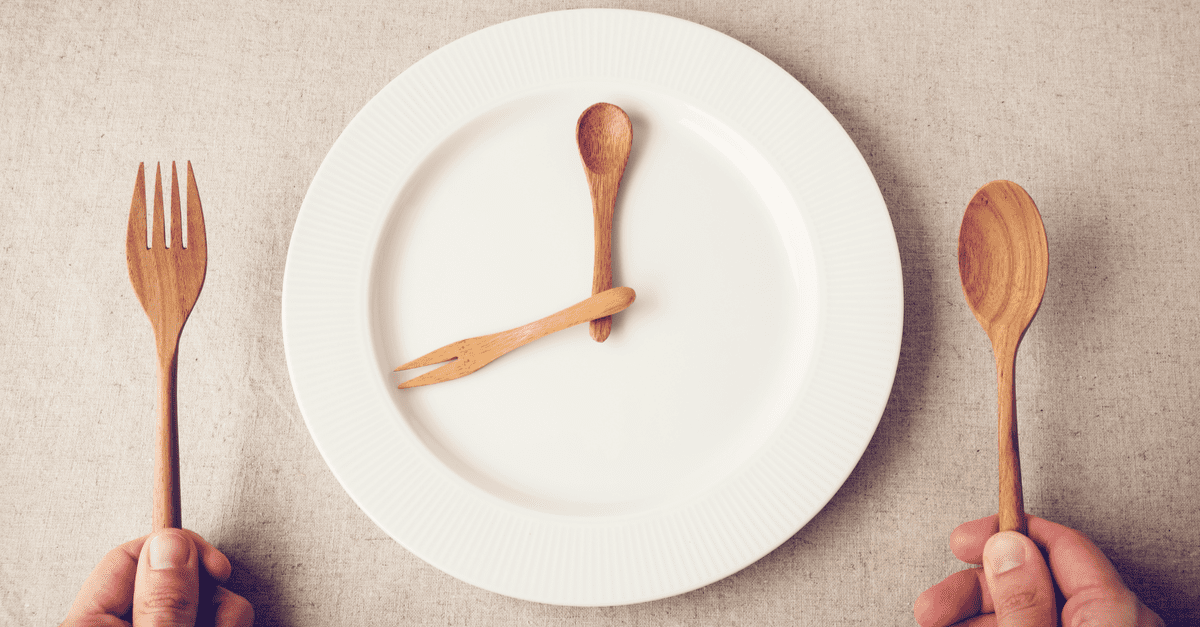
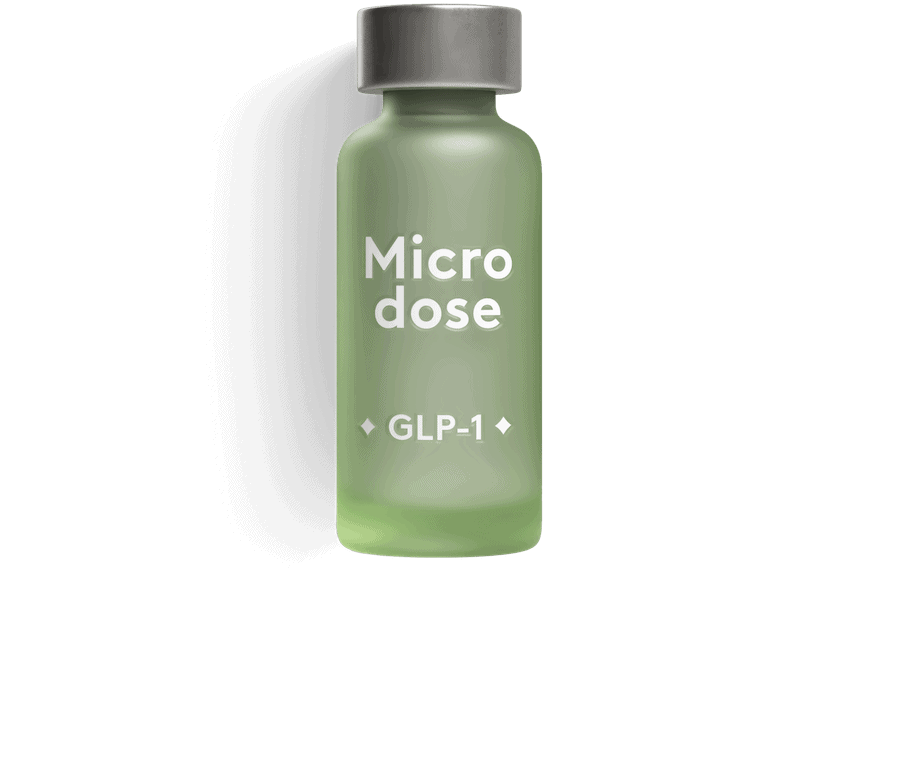







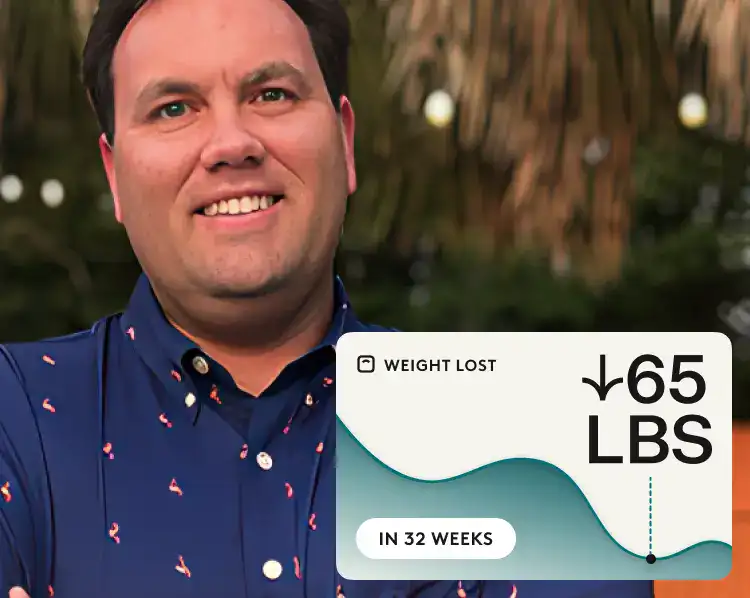

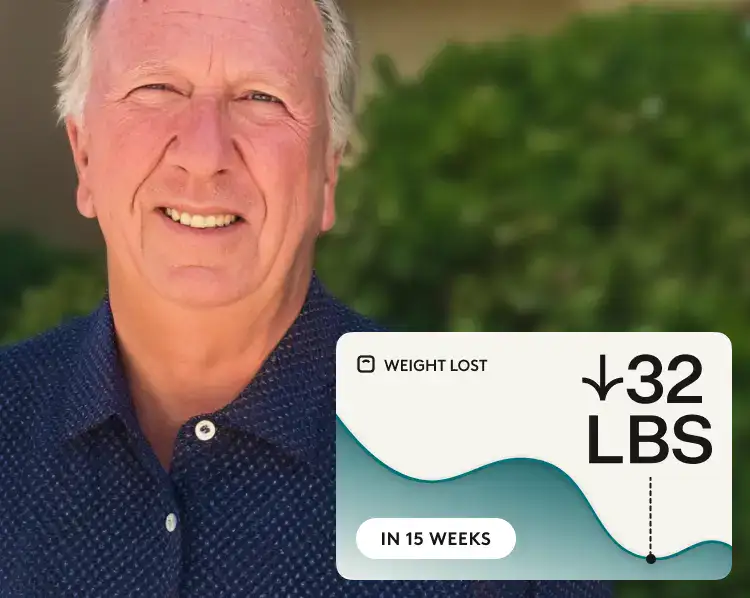
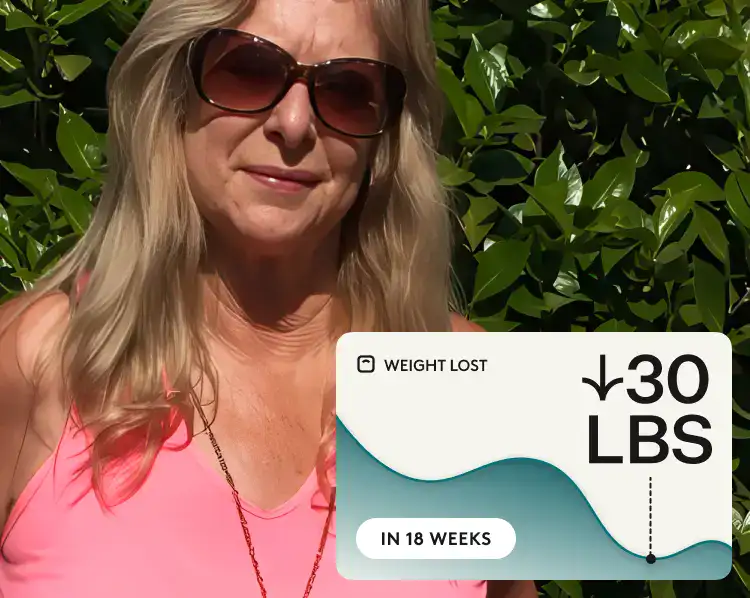




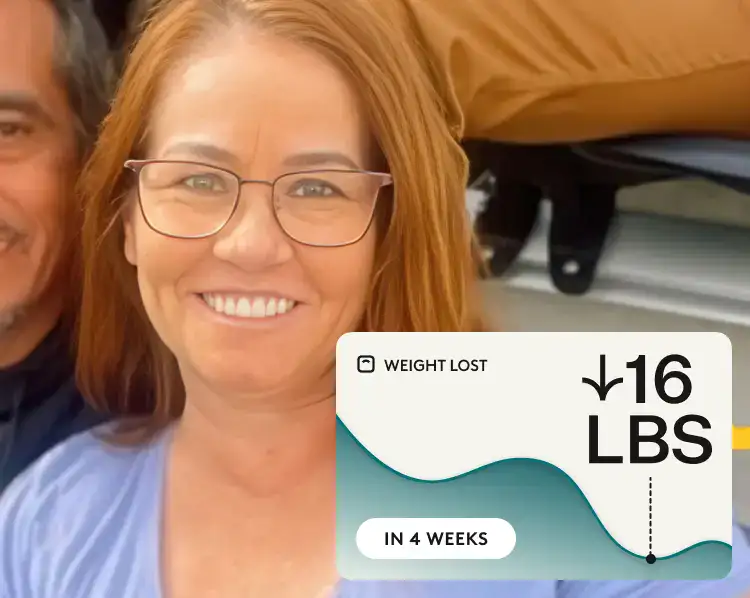


 Meaghan Cameron
Meaghan Cameron
 Noom Team
Noom Team

 Shoshana Fishbein
Shoshana Fishbein
 Melissa Kay
Melissa Kay
